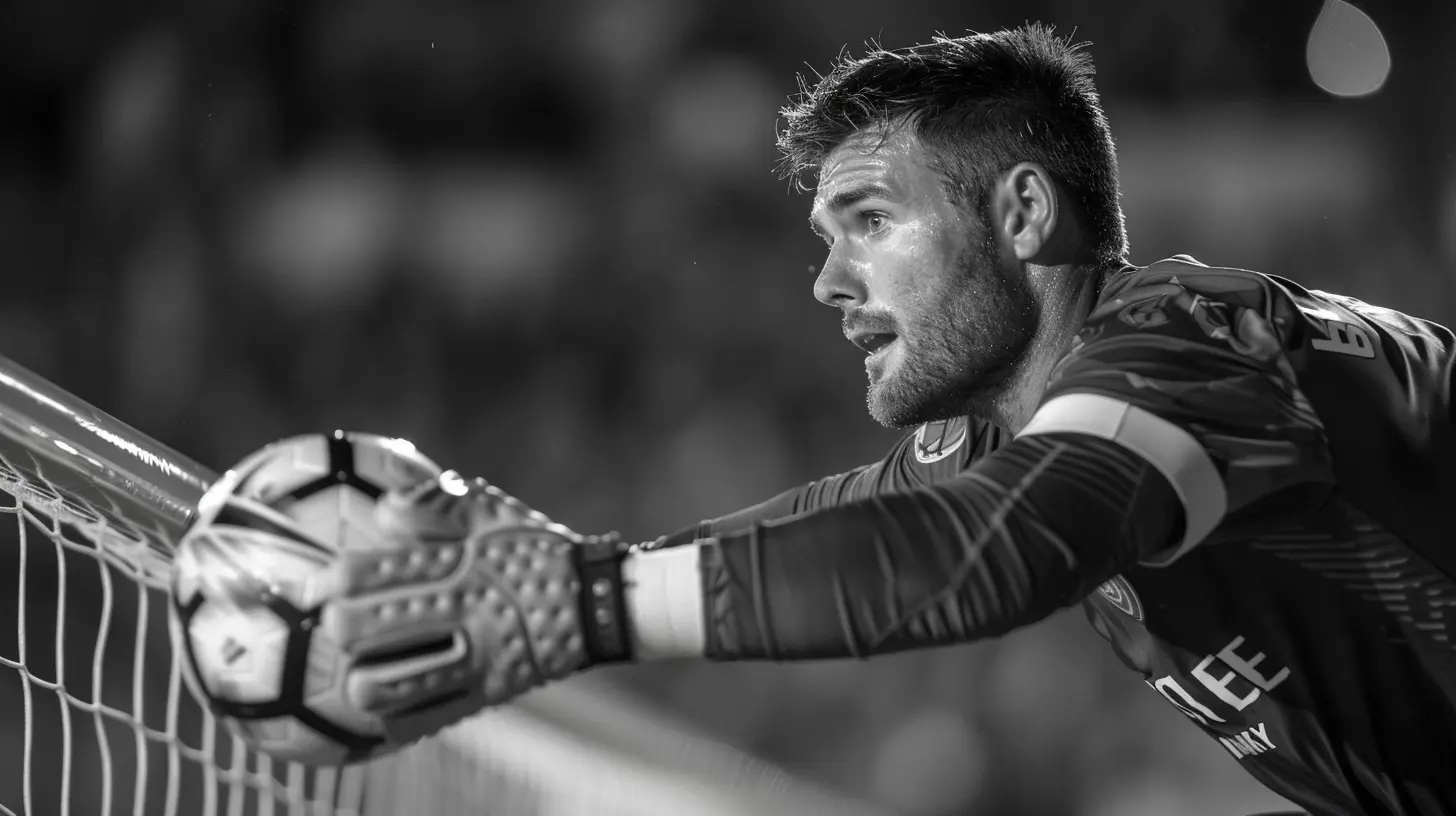Pressing and Counter-Pressing: Winning the Ball Back
17 July 2025
In modern football, it isn’t just about scoring goals — it’s also about how quickly you can win the ball back after losing it. That’s where pressing and counter-pressing come into play. If you’ve watched teams like Liverpool under Jurgen Klopp or Manchester City with Pep Guardiola, you’ve seen this in action.
These tactics aren’t just buzzwords commentators throw around to sound smart. Pressing and counter-pressing are finely tuned strategies that can tilt the game in your favor. So, let’s break it all down in a way that makes sense — no jargon, just real talk about how these tactics work and why they matter.
What Is Pressing in Football?
The Basics
Pressing is all about putting pressure on the opponent when they have the ball. The goal? Make them uncomfortable. Force mistakes, rush decisions, and ideally, win back possession.Think of it like this — imagine someone trying to write a report while three people are staring at them and asking questions constantly. That’s how it feels to be on the receiving end of a well-organized press.
Types of Pressing
Not all pressing is created equal. Different teams use different systems depending on their strengths and the game state.- High Press: This is full-throttle. Your forwards chase defenders deep into their half. Liverpool did this often in their title-winning season. It’s risky, but it can pin teams in.
- Midfield Press: Here, teams wait for the opposition to enter the midfield before swarming. It’s a bit more conservative but maintains balance.
- Low Press: This one's more defensive. The team sits deep, inviting pressure and waiting to pounce on mistakes. Think of Atlético Madrid — compact, frustrating, and surgical on the break.
So, What’s Counter-Pressing Then?
The Gengen What?
“Gegenpressing” or counter-pressing is basically pressing that kicks in immediately after losing possession. Instead of retreating to defend, the team swarms the player who now has the ball.The idea? Don’t give them time or space to start a counter-attack. Win it back while everyone’s still in attacking positions.
Why It Works
Let’s say your team just lost the ball near the opponent’s box. If you drop back, they could slice through the midfield and hit you on the break. But if you counter-press, you might recover the ball in a dangerous area — maybe 20-30 yards from their goal.That’s massive. Instead of having to build another attack from the back, you’re already knocking on the door.
The Key Ingredients for Successful Pressing
It’s not just about running hard and hustling. Pressing requires coordination, timing, and tons of discipline. Here are the elements that make it effective:1. Team Shape and Compactness
Everyone has to stay connected. If one player goes to press and others don’t follow, gaps open up. A good press works like a net — it tightens until the opponent has nowhere to go.2. Communication
Players need to talk. Constantly. “Shift left!” “He’s free!” “Press now!” Without that chatter, confusion creeps in, and the whole thing falls apart.3. Triggers
A pressing trigger is a cue for the team to go. It could be a bad touch, a pass to a weak-footed player, or when the ball is in a certain zone. These triggers help players know when to pounce.4. Fitness Levels
Let’s be real: pressing is exhausting. You can’t fake it. You need players who can run for 90 minutes and still have juice in extra time.
Advantages of Pressing and Counter-Pressing
So why are top teams investing so much in this tactic? Because it works — big time.1. More Ball Possession
If you’re winning the ball back quickly, you naturally dominate possession. And in football, the more you have the ball, the less time your opponent has to hurt you.2. Higher xG Opportunities
Winning the ball close to the opponent's goal often means fewer passes to the net. That leads to better quality chances. Stat heads call it increased “expected goals” (xG). Coaches call it smart football.3. Psychological Pressure
A team that’s pressed relentlessly starts to panic. They second-guess. They rush. And more often than not, they make costly errors.4. Control of Tempo
With good pressing, you dictate the rhythm of the game. The opponent reacts to you, not the other way around. That’s huge.Risks Involved (Because It Ain’t All Sunshine)
Let’s not pretend pressing is magic. If it's so great, why doesn’t every team use it nonstop?1. Energy Drain
High pressing takes a toll. If you don’t have depth or fit players, fatigue sets in. And tired legs don’t chase much.2. Vulnerable to the Counter
If the press fails — especially high up the pitch — the opposition can break quickly. Suddenly, you’ve got three attackers running at your two center-backs. Not ideal.3. Requires Smart Players
Pressing involves split-second decisions. One wrong move and you're exposed. Players who aren’t tactically disciplined will hurt more than help.Famous Examples of Pressing and Counter-Pressing
Let’s put some meat on the bones. These aren’t just theories — the best teams have made a living off these tactics.Jurgen Klopp’s Liverpool
Klopp’s version of gegenpressing is legendary. After losing the ball, his players swarm like bees. They overload one side of the pitch and win the ball back high. That’s how they beat teams like Barcelona 4-0 in unforgettable nights.Pep Guardiola’s Manchester City
City press with brains. They press in pockets — cutting off passing lanes, forcing errors, and turning over the ball in midfield. Their pressing is like a chess game — calculated and ruthless.Marcelo Bielsa’s Leeds United
Bielsa’s Leeds, though inconsistent, was built to press tirelessly. Every player had a specific role, and the whole system depended on high fitness and even higher commitment.How to Train Pressing and Counter-Pressing
Want to implement this style? Whether you’re coaching a youth team or just playing with your mates, here’s what you need to focus on:1. Small-Sided Games
5v5 or 7v7 games in tight spaces force players to press and recover quickly. It helps build instincts and reactions.2. One-Touch Drills
These improve decision-making speed. The quicker your players move the ball, the easier it is to press when you lose it.3. Shadow Play
Run through pressing patterns without opposition. This helps players understand where to be and when to press.4. Fitness with Purpose
Don’t just run laps. Combine sprints with ball drills to mimic real-match scenarios.The Future of Pressing
Is pressing here to stay? Absolutely. With the game getting faster and more possession-oriented, pressing is no longer optional — it's vital.That said, we’re seeing evolutions. Teams are now adding layers — pressing traps, coordinated overloads, and hybrid systems that morph during the game.
It’s like playing a video game on hard mode. The goal is to win territory, time, and control without ever letting your guard down.
Final Thoughts
Pressing and counter-pressing aren’t just tactics — they’re a mindset. A refusal to let the opponent breathe. A commitment to dominance, not just in attack but in every moment of the match.Whether you’re a fan, a coach, or a Sunday league hero, understanding the power of pressing can change the way you see the game. It’s not always flashy, but boy, does it win games.
Next time you’re watching your favorite team, keep an eye on when they lose the ball. Do they drop back or strike back? That tiny moment often decides who walks away with the win.
all images in this post were generated using AI tools
Category:
TacticsAuthor:

Ruben McCloud
Discussion
rate this article
1 comments
Tracie Barker
Great insights! Understanding pressing strategies truly enhances our appreciation for the game's complexities.
July 31, 2025 at 12:34 PM

Ruben McCloud
Thank you! I'm glad you found the insights valuable. Understanding these strategies definitely adds depth to our appreciation of the game!


